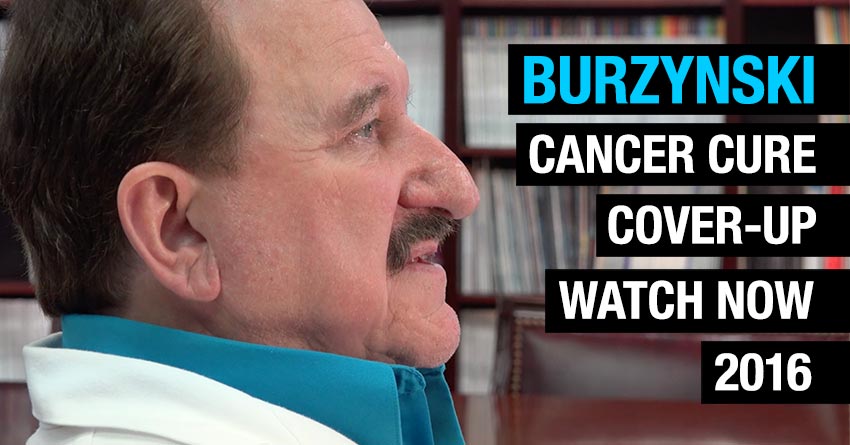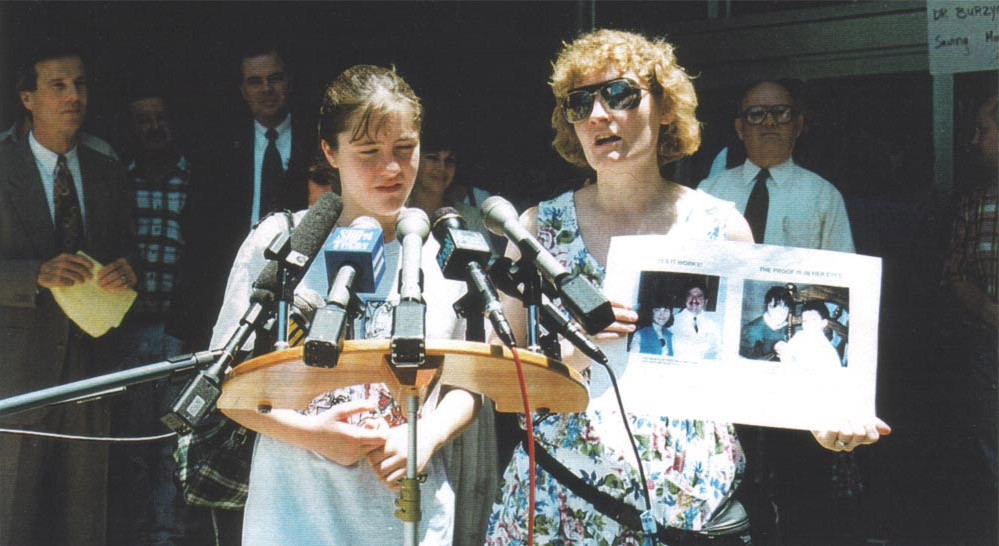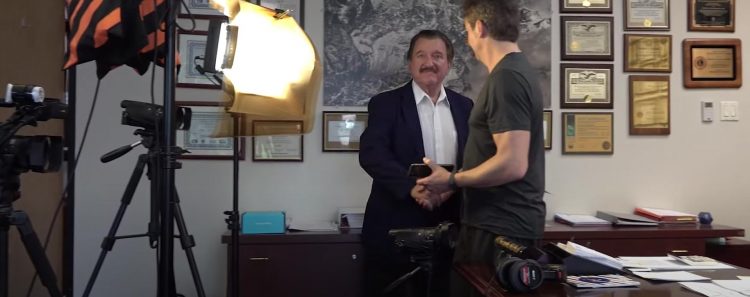Watch a new 7-part Interview Series with Dr. Burzynski with Eric Merola, the director of the Burzynski documentary series.
Tag Archives: Brain Cancer
Burzynski: Peer-Reviewed Published Articles (most recent to 2015)
- Tuesday, 24 November 2015 12:41
- Written by admin
- 0 Comments
List of recently published peer-reviewed articles related to
Antineoplastons and Burzynski’s “personalized cancer therapy”
ANTINEOPLASTONS:
2015
A Phase II Study of Antineoplastons A10 and AS2-1 in Adult Patients with Primary Brain Tumors—Final Report (Protocol BT-09)
Link: http://www.scirp.org/Journal/PaperInformation.aspx?PaperID=61444
———-
A Phase II Study of Antineoplastons A10 and AS2-1 in patients with recurrent Anaplastic Astrocytoma—Final Report (Protocol BT-15)
Link: http://www.ccsenet.org/journal/index.php/cco/article/view/47383
———-
A Phase II Study of Antineoplastons A10 and AS2-1 in patients with Brainstem Gliomas.
The Report on Non-Diffuse Intrinsic Pontine Glioma (Protocol BT-11)
Link: http://www.scirp.org/journal/PaperInformation.aspx?PaperID=55563#.VTRM6hPF_t1
———-
A Phase II Study of Antineoplastons A10 and AS2-1 in Adult Patients
With Newly-Diagnosed Anaplastic Astrocytoma – Final Report (Protocol BT-08)
Link: http://www.ccsenet.org/journal/index.php/cco/article/view/42461
———-
2014
———-
The response and survival of children with recurrent diffuse intrinsic pontine glioma based on
phase II study of antineoplastons A10 and AS2-1 in patients with brainstem glioma
Pubmed link: http://www.ncbi.nlm.nih.gov/pubmed/24718705
———-
A Phase II Study of Antineoplastons A10 and AS2-1 in Children with High-Grade Glioma.
Final Report (Protocol BT-06), and Review of Recent Trials
Abstract: http://www.scirp.org/journal/PaperInformation.aspx?paperID=46242#.VMF91i7F-Qw
———-
A Phase II Study of Antineoplastons A10 and AS2-1 in Adult Patients with Recurrent Glioblastoma Multiforme:
Final Report (Protocol BT-21)
Abstract: http://www.scirp.org/journal/PaperInformation.aspx?PaperID=49564#.VMF-dS7F-Qw
———-
A Phase II Study of Antineoplastons A10 and AS2-1 in Children with Recurrent, Refractory or Progressive Primary Brain Tumors—
Final Report (Protocol BT-22)
Abstract: http://www.scirp.org/journal/PaperInformation.aspx?PaperID=49568#.VMF-wy7F-Qw
———-
Recurrent Glioblastoma Multiforme— A Strategy for Long-Term Survival
Abstract: http://www.scirp.org/journal/PaperInformation.aspx?PaperID=49566#.VMF_SS7F-Qw
———-
The Effect of Antineoplastons A10 and AS2-1 and Metabolites of Sodium Phenylbutyrate
on Gene Expression in Glioblastoma Multiforme
Abstract: http://www.scirp.org/journal/PaperInformation.aspx?PaperID=49471#.VMF_jy7F-Qw
**********
PERSONALIZED GENE-TARGETED
2015
———-
A Case of Sustained Objective Response of Recurrent/Progressive Diffuse Intrinsic Pontine Glioma
with Phenylbutyrate and Targeted Agents
Abstract: http://www.scirp.org/journal/PaperInformation.aspx?paperID=52985#.VMF9NS7F-Qw
———-
2014
Preliminary Findings on the Use of Targeted Therapy in Combination with Sodium Phenylbutyrate
in Colorectal Cancer after Failure of Second-Line Therapy—A Potential Strategy for Improved Survival
Abstract: http://www.scirp.org/journal/PaperInformation.aspx?PaperID=51577#.VMF_6S7F-Qw
———-
Preliminary Findings on the Use of Targeted Therapy in Combination with Sodium Phenylbutyrate in
Advanced Malignant Mesothelioma: A Strategy for Improved Survival
Abstract: http://www.scirp.org/journal/PaperInformation.aspx?PaperID=50986#.VMGALS7F-Qw
———-
Preliminary Findings on the Use of Targeted Therapy in Combination with Sodium Phenylbutyrate in
Recurrent Advanced Pancreatic Cancer—A Potential Strategy for Improved Survival
Abstract: http://www.scirp.org/journal/PaperInformation.aspx?PaperID=50936#.VMGAci7F-Qw
———-
Preliminary Findings on the Use of Targeted Therapy with Pazopanib and Other Agents in Combination
with Sodium Phenylbutyrate in the Treatment of Glioblastoma Multiforme
Abstract: http://www.scirp.org/journal/PaperInformation.aspx?paperID=52600#.VMGAtC7F-Qw
Just released: BURZYNSKI: CANCER CURE COVER-UP (2016)

Your rental or purchase of this new release helps to support and maintain our ability to keep this story alive and in the public’s eye, only $5.00.
Jessica Ressel-Doeden – Inoperable Diffuse Intrinsic Brainstem Glioma (DIPG) – Cured with Medical Records
- Sunday, 09 August 2015 23:53
- Written by admin
- 0 Comments
Jessica Ressel-Doeden was diagnosed with a diffuse, intrinsic, childhood brainstem glioma (DIPG) in March of 1996 at age eleven.
According to the available data there has not been a single case of a verified cure (5-year survival) with patients diagnosed with diffuse (inoperable) childhood brainstem glioma treated with radiation and/or chemotherapy in any FDA-supervised experimental clinical trial in the history of medicine. Dr. Burzynski’s Antineoplastons hold the only cures to date—with a cure rate in some studies as high as 27.5% [PDF of original report, table page 172] + [Chemo/Rad – PubMed 2005] [ANP – PubMed 2003] [ANP – PubMed 2006] [ANP – Cancer Therapy 2007]
[The Lancet 2006 explains grim outlook – “survival remains static”].
** April 2014 Peer-reviewed clinical trial report for DIPG using Antineoplastons **
Following her initial diagnosis, the Ressel’s were informed that the only method approved by the FDA to “treat” her condition would be radiation. The radiologist informed the family that radiation would be shot “through the ears, burning her healthy cells from the outside in—causing permanent deafness, all of the hair around her ears would be gone—never grow back, her ears would become deformed and burnt, her pituitary gland would be destroyed—the gland that allows a human to grow and develop, and if she survived the treatment she would become a vegetable and incapable of taking care of herself.”
Considering that radiation treatment has never been shown to cure a single patient with her condition, combined with the devastating side effects such a treatment would inflict on an eleven-year old child—her parents declined the radiation treatment offered by her oncologists and decided to have Jessica treated by Dr. Burzynski instead.
Medical Records
1. Diagnosis: Jessica underwent an MRI on April 10, 1996 at the St. Louis Children’s Hospital which revealed a tumor in her brainstem. Her diagnosis was also confirmed on May 7, 1996 upon initial consultation with Dr. Burzynski. She had multiple MRIs after she was admitted into the Burzynski Clinic. There is also multiple third-party confirmations of diagnosis by physicians from the Springfield Clinic and the Missouri Eye Institute demonstrated by letters written to the Ressel’s insurance company.
2. Recovery: On May 8, 1996, Jessica began antineoplaston treatment. Her tumor disappeared and reappeared multiple times throughout the course of 14 months after the start date of treatment. On June 27, 1997, her tumor disappeared permanently. She has had multiple MRIs of the brain since that time which have all been negative for tumor recurrence—with the last MRI being May 20, 2005. Read Jessica’s treatment summary here. Read Jessica’s tumor measurements here. After her full recovery, the Mid-Atlantic Open MRI of Springfield, MO confirmed her tumor-free MRIs from 11/97 to 5/98 [PDF all medical records and sources for this paragraph].
3. FDA-supervised clinical trial data comparing chemotherapy and radiation treatment to antineoplaston treatment in patients with diffuse, intrinsic, childhood brainstem glioma. It has been clearly demonstrated that of 107 patients treated with chemotherapy and radiation with this type of tumor: 0.9% of these patients were cancer-free at the end of treatment, with no patient surviving 5 years after diagnosis. Of the patients treated with antineoplastons with this type of tumor: 27.5% of them were cancer-free at the end of treatment, with 27.5% of the patients living at least 5 years after diagnosis. Therefore, Jessica Ressel’s recovery after being treated with antineoplastons is not a mere anecdotal case (See sources from start of this post above).
Most would assume that such results would be front page news across the world, or would be grounds for Dr. Burzynski to receive the Nobel Prize in medicine. Sadly, these peer-reviewed results have been universally ignored by mainstream medicine.
Raising the Money to Receive Her Antineoplaston Treatment
Unfortunately, most insurance companies will not cover antineoplaston treatment. The Ressel family had to come up with $6000 per month to pay for her treatment all by themselves. The high cost of antineoplaston treatment is directly due to the United States government’s refusal to allow any tax-payer money to be granted to fund the FDA-supervised clinical trials that Jessica participated in—while simultaneously granting PhRMA tens of millions of dollars to fund similar FDA-supervised clinical trials with inferior outcomes.
Below is a TV news footage montage from 1996-1997 covering Jessica’s story, fundraisers and more:
The Ronald McDonald House Charities®
During our interview with the Ressel family, Robin said that she “had called the Ronald McDonald House to see if we’d be able to stay there, because we were going to have to stay in Houston for a while, I was talking to a volunteer on the phone—when I mentioned we had an eleven-year old we were taking to see Dr. Burzynski and we needed a place to stay for a couple of weeks—you could hear whispering going on in the background, the volunteer was being prompted what to say, and The Ronald McDonald House refused to allow us to stay there because we weren’t an M.D. Anderson patient. I felt bad for the volunteer, you could tell she was being told what to say.” Dan followed up by saying “There are a lot of programs out there, but I will never give a dime to the Ronald McDonald House. We were in a desperate situation, and they refused us because we were a patient of Dr. Burzynski”.
Joining the Fight in Preserving Burzynski’s Freedom
Jessica Ressel was being treated by Dr. Burzynski in 1996, several months after the FDA’s 5th grand jury against Dr. Burzynski resulted in an indictment. “The government was more frustrating than the cancer itself.” The Ressel family traveled to Washington DC to meet hundreds of other Burzynski patients to speak out against the FDA’s attempt to remove him from society.

Jessica Ressel’s medical records are published by written authorization by Jessica Ressel-Doeden.
2015: Texas Medical Board vs. Burzynski (again)
- Sunday, 09 August 2015 23:05
- Written by admin
- 0 Comments
The attempts to knock Burzynski out of business is like a game of “whack-a-mole” between state and federal agencies. For the time being the FDA is leaving Burzynski alone, but the Texas Medical Board (TMB) is trying to shut his clinic down once again.
The Texas Medical Board can no longer go after Burzynski for using Antineoplastons, as they lost countless court cases against Burzynski, ending in the State Supreme Court. Now they have changed their tactics and going after him in other ways. This case, like the countless ones before it will be a loss for the TMB, but the TMBG isn’t interested in winning any of the cases, it is a way to attempt to drain Burzynski financially.
Read the latest “complaint” against Burzynski here. Their lead prosecutor left the case for unknown reasons, postponing the case until November of this year. This is an interesting read from an independent moderator at “Dr. Social”, here.Lt. Col. James Treadwell – Glioblastoma Multiforme Grade IV – Cured with Medical Records – brain cancer
- Sunday, 09 August 2015 23:01
- Written by admin
- 0 Comments
James Treadwell was diagnosed with a Glioblastoma Multiforme Grade IV brain tumor in 2004. He has been cancer-free since 2006. An MRI performed in 2010 has confirmed that he is still cancer-free today.
#1 Diagnosis: Pathologists performed a biopsy at the Naval Medical Center in San Diego, CA establishing his diagnosis [PDF]. A second opinion was sought at the UCLA Medical Center which also verified his diagnosis [PDF]. See the Baseline MRI: 9/22/2004 [view image].#2 Prior Treatment: Prior to Antineoplaston treatment, James Treadwell underwent two surgeries (craniotomies), a Gliadel wafter placement, six weeks of standard radiation treatment (from June 22 to August 4, 2004), three cycles of Temodar® chemotherapy (from June 23 to August 20, 2004). None of these treatments cured Mr. Treadwell of his cancer. In fact, after the second surgery no residual cancer was found, and after the course of radiation and chemotherapy his cancer had returned and doubled in size by September 14, 2004.
#3 Recovery: After two surgeries, a Gliadel wafer, and 6 weeks of both chemotherapy and radiation failed to rid Mr. Treadwell of his brain cancer—on September 24, 2004 James Treadwell was admitted for administration of Antineoplaston treatment. He did not receive any other treatment other than Antineoplaston treatment after September 24, 2004. On November 30, 2006 his cancer was gone [PDF of tumor measurements]. [PDF of ANP treatment summary]; [11/30/2006 MRI image]; [11/2008 MRI image].
#4 Treating Glioblastoma Multiforme Grade IV without Antineoplastons. In 2010, some German scientists have admitted total defeat: “For patients with relapsed GBM [Glioblastoma Multiforme] there is currently no standard systemic therapy.”
The New England Journal of Medicine Published a study from 2005 stated: “Glioblastoma, the most common primary brain tumor in adults, is usually rapidly fatal. The current standard of care for newly diagnosed glioblastoma is surgical resection to the extent feasible, followed by adjuvant radiotherapy. In this trial we compared radiotherapy alone with radiotherapy plus temozolomide [Temodar®], given concomitantly with and after radiotherapy, in terms of efficacy and safety.” This is the same treatment Mr. Treadwell received prior to being treated with Antineoplastons.
It should be noted that Senator Ted Kennedy died of Glioblastoma Grade IV brain cancer. Countless Glioblastoma survivors cured by Antineoplastons as well as many other people cured of other types of cancer due to Antineoplastons flooded Kennedy’s office to share with him the existence of Antineoplastons. Mr. Kennedy’s wife wrote the Burzynski’s Clinic requesting all communication from Antineoplaston treated cancer survivors stop contacting his office entirely. A year later, Kennedy was dead. Lt. Col. James Treadwell’s medical records are published by written authorization by Lt. Col. James Treadwell.



You must be logged in to post a comment.